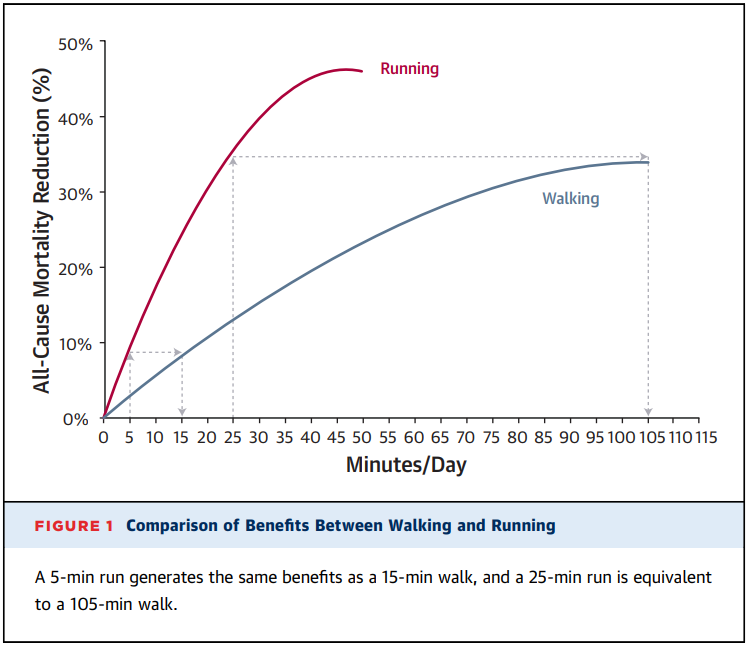How to determine the ideal jogging duration for longevity
If you want to know the maximum effective dose of jogging for longevity, here's the answer

In the last article, we explored the ideal amount of walking per day for longevity and found out that it's around 13,500 steps.
But what about jogging? Let's find out.
Jogging vs. Walking
Just to be clear, it doesn't have to be either or. Some people love jogging, others hate it.
Jogging can put strain on your joints and might not be feasible for everyone. Over the course of a jogging career, the probability to get injured goes up. "One study reported that 1 in 4 (25.9%) experienced injuries that were significant enough to restrict running in an 8-week practice run of 4 miles (...). Even experienced runners with good preparation could not avoid injuries" [1, 2]
The beauty of walking is that almost anyone can do it, even untrained individuals, and the injury risk is minimal. If you do it with others, you can have a nice conversation at the same time and enjoy the added social benefit.
To reap the maximum longevity benefit, you'd need to walk 13,500 steps, which takes about 90 minutes. Of course, you can collect those steps over the course of the day, but not everyone has the time.
You can mix things up. You can run a bit, then walk a bit, or you can alternate jogging and walking days.
Time effectiveness
Jogging can be more time-effective, as you get more steps in the same amount of time. Just to be clear: We're talking about jogging at a moderate pace, not intense running.
A study published in the Journal of the American College of Cardiology looked at the effects of walking compared to running.

"Lee et al. (8) found that minimal running of 5 to 10 min/day was associated with reduced mortality from all-cause (30%) and cardiovascular disease (45%) and could add 3 years of life expectancy from a 15-year follow-up of 55,137 adults." [3]
The study indicates that a brief 5-10 minute daily jog at moderate intensity (below 6 mph/9.7 km/h) may yield longevity benefits similar to those gained from 15 minutes of walking each day. Running for 15–20 minutes could potentially match the health advantages of a one-hour walk, while extending your run to 25 minutes might provide benefits comparable to walking for about 100 minutes—where walking's health improvements plateau. In reality, they don't truly plateau, but the benefit is more marginal. See the last article for more on that. The positive effects of running continue to increase with duration, showing additional benefits up to approximately 45 minutes per day.
So there you have it:
Moderate jogging for up to 45 minutes a day has positive health benefits but comes with increased injury risk compared to walking. But even a 10-minute run each day improves your health and is probably less risky.
You can do too much
The jogging I'm referring to in this article is jogging at a moderate pace, not running at a high intensity. The latter might be a great athletic feat, but it doesn't necessarily improve longevity. In the next article, we'll take a look at how much exercise is too much and how strenuous intensity can actually shorten your life.
Disclaimer
This site cannot and does not contain medical/health advice. The medical/health information is provided for general informational and educational purposes only and is not a substitute for professional advice. Accordingly, before taking any actions based upon such information, we encourage you to consult with the appropriate professionals. We do not provide any kind of medical/health advice. The use or reliance of any information contained on the site is solely at your own risk.



